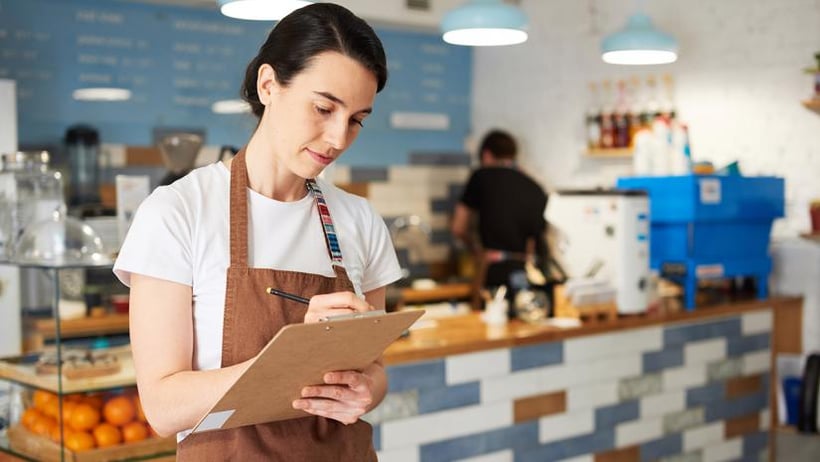
Food businesses in Canada who are reopening to the public are tasked with the challenge of operating under new COVID-19 regulations. This includes enforcing physical distancing measures, frequent cleaning and sanitizing, and maintaining strict capacity limits, to name a few. The goal is to continue to prevent the spread of COVID-19 while allowing food businesses to open their doors to customers again. But reopening does come with its set of risks, and governmental bodies are striving for new and efficient ways to keep the staff and customers of a food business safe. Contact tracing is one way that food businesses can go the extra mile to help prevent the spread of COVID-19.
What is contact tracing?
Contact tracing is a way for health officials and other governmental bodies to identify, inform, assess and monitor people that have been potentially exposed to COVID-19. It is a way to track down people that may be infected with COVID-19 and keep them from potentially infecting other people.
Currently, there are a few third-party apps that are being used for contact tracing among Canadians. As for food businesses, restaurants and other types of dine-in businesses are being encouraged to conduct contact tracing within their premises. By doing so, food businesses can assist with helping inform and protect those who may have been exposed to COVID-19 within the establishment. Rules and regulations for contact tracing may vary by province and territory. Food businesses must contact their local health authority for more information about what regulations apply to the food business.
Contact tracing involves contacting people who have potentially been exposed to COVID-19 and they must be followed up with daily for up 30 days after the last time of exposure. How long the contact needs to be followed up with, and how frequently, depends on the province, territory and local municipality.
How to conduct contact tracing
There are several steps to conducting contact tracing in a food business. The first actions that need to be taken are preparatory. Food businesses must first define who should be contacted in the event of potential exposure to COVID-19. According to the World Health Organization, anyone who fits the following criteria should be contacted:
- Was within 1 metre of a COVID-19 case for more than 15 minutes
- Had direct physical contact with a COVID-19 case
Food businesses must also define how many people from a group of customers should have their information recorded. This varies from province to province, so food businesses must contact their local health authority for more information about applicable regulations.
Once the preliminary research and decisions have been made, food businesses must create a recording document to be used for information collection. This document can be used digitally (on a computer or tablet) or it can be printed out and kept at the front of house. A new document must be filled out every day.
It is essential that safeguards are in place in order to guarantee the secure storage of information in the food business. The safeguards must be in accordance with the legal frameworks and national regulations in place in Canada. If printed, the recording document must be stored in a locked and secure location. If on a computer or other digital device, the document must be password protected.
Know the law
In order to conduct contact tracing, it is essential that food businesses do so legally. Food businesses must understand the provincial, territorial and municipal regulations for contact tracing that apply to the business. When it comes to data collection, it is essential that food businesses:
- Only collect data that is necessary in order to contact a customer (or party of customers) in the event of COVID-19 exposure
- Do not use the data to market the restaurant
- Do not sell the data to a third party
- Properly destroy the data after 30 days from the date of collection
What to do if an exposure happens
While a COVID-19 exposure can be disheartening and concerning, it is important to remember that this is why contact tracing is so important. In the event of exposure, food businesses must act quickly and professionally while following the action steps that have been decided upon. Be sure to do the following:
- Create a list of individuals who should be contacted due to potential exposure
- Inform the contacts through phone and email
- Provide the contacts with the information they need to know such as COVID-19 symptoms and what to do if they develop symptoms
Conducting contact tracing is essential but requires the proper information to do so properly and legally. Learn how to conduct contact tracing in your food business with the CIFS Factsheet Contact Tracing in Your Food Business.





